My recent column “Why Philanthropy Is Not a Profession,” published by The Chronicle of Philanthropy, elicited a number of very helpful comments, clarifications and critiques.
In this brief response, I’ve found it illuminating to take into account historical, organizational and career considerations of the philanthropic sector.
Historical Considerations
Foundations, the first organized form of philanthropy in the United States, have existed for something over a century. When first launched, the foundations associated with John D. Rockefeller, Andrew Carnegie, and Henry Ford foregrounded the particular agendas of each wealthy philanthropist—either exercised directly or through executives whose assignment was to carry out the will of the philanthropist. With the passing of the original generation, foundations became far more bureaucratic; and they often deviated quite significantly from the ethos of the founder. Also, of significance, many of the foundations deliberately kept low public profiles: they wanted to support “good work” but not necessarily to have their names, or the names of their executives, strewn across the newspaper.
Times change. In some ways, the present era seems a throwback to the founding generation. Individuals of enormous wealth launch foundations (or comparable vehicles, over which they can exert even more control); they often have a clear agenda that they would like to pursue; and they take more of a hands-on approach than did the founding generation. Across the sector, favorable publicity is sought for both the foundation and its leaders—many employ public relations specialists. Worth noting, there are also far more philanthropies of significant size emerging in other countries, with each country having its own legislative purview and distinctions. Perhaps the biggest difference from earlier eras is the trend toward “sunsetting.” Many wealthy individuals plan deliberately for their foundations to close shortly after their own death.
It’s much too early to know whether these trends will continue, reverse, or move in yet other directions.
Organizational Considerations
My original column failed to distinguish adequately among three different roles: 1) the original philanthropist, the person or family whose assets fund the dispersing entity; 2) the executive of the foundation, who has a great deal of power and latitude, as long as the founder and /or his family are not on the scene and as long as the executive has the support of the board; 3) program officers (whom I called “philanthropoids”), who solicit and judge applications, typically have personal contacts with recipients, and are answerable to the executive and the board.
Both the original funder and the chief of the organization are public figures; they have the advantage and assume the burden of being in the public eye. As one foundation executive wrote, they have an amazing set of tools available, if they choose to use them, and at least until now, very little public scrutiny or second-guessing of their decisions.
In contrast, the philanthropoids are typically not known to the outside world. And within the world of funding, they are hard-pressed to get honest feedback on what and how they are doing. One shrewd foundation executive put it this way: “They are always in the never-never land of aspiring grantees who treat them with exaggerated respect and admiration, while their immediate superior in the philanthropic organization is often hesitant to be the only one who offers criticism of their performance.”
In a paper published a decade ago, Laura Horn and I described these philanthropoids as members of “a lonely profession”: while they are seen by grantseekers as powerful and worthy of deference, they typically do not know where they stand—what they have done well, and where they have made mistakes. And once they leave the funding agency, they are unlikely to be remembered fondly by the numerous individuals whom they have not funded… and fortunate if their former grantees send them an annual holiday greeting.
Career Trajectory
Unlike other vocations, the career trajectory for those in philanthropy is unclear and perhaps unknowable in advance. Leaders of philanthropic organizations rarely come from within that particular organization or indeed from other foundations (Susan Beresford of Ford is a well-known exception); typically, in the past, they came from academe, often former college presidents, and perhaps in the future, they are more likely to come from the ranks of higher corporate management. Until now, presidency of a foundation is likely to be the individual’s last job; only rarely does the former leader of a foundation take a major job elsewhere, and almost never at another foundation.
In contrast, program officers have far less illustrious pasts—rarely are they known outside the particular billet in which they worked. Moreover, as mentioned, because of the nature of their work, they deliberately maintain a low profile. Almost all who study or lead philanthropic organizations believe that program officers should have clear term limits; but for collegial reasons (and in its collegiality, philanthropy has the trappings of a genuine profession), it is difficult to enforce this preference. When, for whatever reason, the time or the term is “up,” there is no obvious next step. Perhaps in this way, more so than any other, philanthropy differs from other aspiring professions—the skills are difficult to define, and what might elsewhere count as an asset (having mastered certain skills) does not readily translate into an upward career trajectory, either within the present place of employment or at another philanthropic organization. It’s rarely desirable to “have been” a philanthropoid.
Now, of course, all of this could change. In a critical comment on my column, one writer enthusiastically described the professional training that she tries to give to program officers at foundations. I have no doubt that one can be helped to be a better philanthropoid. And perhaps in a changing landscape, more individuals who have worked in one philanthropy will transition to another philanthropic organization, perhaps even at a higher rank. But unless one can confidently answer the question “And what will your next job be?”, the career trajectory of philanthropoids will differ from trajectories associated with the traditional professions.
Closing Comment
As for my basic contrast between two approaches to philanthropy—“accountability” and “taste”— commentators acknowledged its usefulness. Sara Lawrence-Lightfoot wrote that her goal as a board chair has been to “bring together artistic value laden approaches and evidence based procedures.” Instead of worrying whether philanthropy is a profession, she declares “what matters is that we engage(d) in good works.” Foundation president Michael McPherson comments, “I’ve come to think that the role is part ‘curation’ and part something like strategic philanthropy. Thus, our fellowship programs are goal oriented and their effectiveness can be measured in ways that make sense. It would be very hard to apply that kind of frame to our field-initiated programs, where curation is a better model.” But Stanley Katz, a leading scholar of philanthropy, is not sanguine. He laments that for many leaders of the sector, “philanthropy is simply the business of giving, and … good works can be objectively and systematically evaluated in the same manner as the production of widgets. The objection that you report yourself making is one that fewer and fewer in the field would understand these days. It is a tremendous concern, especially with so few making so many decisions about such tremendous sums of money.”
In my view, if the price of gaining professional status is the embracing of a strict “business accountability” stance, it is a price that is not worth paying. Philanthropy is one of the few remaining fields where one can use human judgement and taste and where one does not need either to raise money or to follow strict legal guidelines. Rather than cutting off one of its limbs, I’d prefer if philanthropy were to help other sectors generate a broader vision of the means at their disposal.
My profound thanks to Michael Bohnen, Angela Covert, Patricia Graham, Stanley Katz, Raquel Marti, Michael McPherson, Sara Lawrence-Lightfoot and Lee Shulman for their thoughtful comments and suggestions.
Reference
Gardner, H. and Horn, L. (2006). The lonely profession. In W. Damon and S. Verducci (eds.). Taking philanthropy seriously. Bloomington, IN: Indiana University Press, pp. 77-93.







